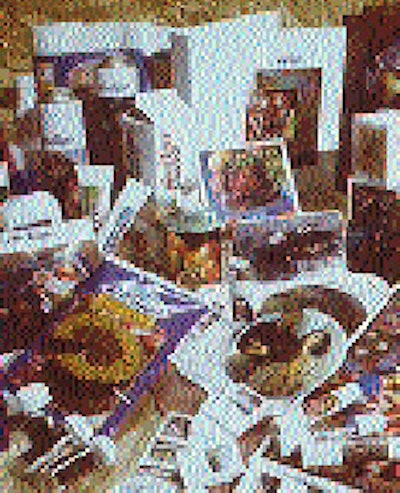What's that mean to your European packaging operations? Nothing right now, and not much in the near future. Here's why: The Directive was adopted as a "harmonizing" initiative, meaning the idea was to establish a single directive on packaging and packaging waste for Europe. This, reasoned those who suggested the idea in the first place, would promote free trade among the various EU member states. Unfortunately, passage of the EU directive doesn't mean packaging managers now have a single European packaging law to comply with. It will be a long time, if ever, before that happens. What it does call for is: * collection of 50-65% of all packaging materials, and * recycling of 24-45% of all packaging materials with no less than 15% of any one material type recycled. That's about as hard as the numbers get with this Directive. How individual EU member states go about achieving those targets is left up to the states. And, even if and after all 15 current EU members (Austria, Belgium, Denmark, England, Finland, France, Germany, Greece, Ireland, Italy, Portugal, Sweden, Spain, Switzerland and The Netherlands) adopt the Directive, each country can and will still impose its own national environmental packaging laws. That's because the Directive just sets up the recovery and recycling targets. How individual EU countries shoot for the targets is left up to them. Germany, for instance, won't have to dismantle its "Green Dot" Duales System Deutchland (DSD) fee system for package recycling. Nor will it have to scale back its higher household packaging waste recovery and recycling rates - as long as they can demonstrate that their initiatives aren't harming international free trade. The Directive doesn't even address two of Europe's harshest anti-trade packaging laws: Denmark's ban of beverage cans and Germany's quotas for beverage containers. Individual EU states have until June 1996 to adopt the Directive as law and five years after that before its collection and recycling targets must be met. Bottom line? The Directive won't force you to change your packaging... and it won't force EU countries to change their packaging laws. The measure does little to cut through the web of European environmental packaging regulations you'll be facing well into the first decade of the 21st century. Digital Color hopes to leave its imprint on packaging Imagine what you could do if you had a compact, six-color process printer that could transfer your label and package graphics from a workstation monitor directly onto your package in a single shot without the need (or cost) of making plates. That's the vision projected by Indigo NV (Maastricht, Holland) for its Digital Offset Color technology. Less than two years after its debut in the commercial printing field, the technology, designed and built in Israel, is making its packaging debut as the Omnius One-Shot press. In the packaging market, an array of firms are impressed enough with the new technology's packaging potential to form developmental and marketing alliances with Indigo. The Gallus Group (St. Gallen, Switzerland) is offering the technology to print 160- to 333-mm wide webs on its Gallus-Indigo DO 330 press. Comco International (Milford, OH), is adding Omnius units to its label converting systems. Engraph Label Group's Graphic Resources, Inc. (Cold Spring, KY), and Moore Pressure Sensitive Systems (Lake Forest, IL) are installing Digital Color units to produce prime labels. Avery Dennison (Pasadena, CA) and 3M Co. (St. Paul, MN) are developing label stocks optimized for Digital Offset Color printing. In Israel, flexible packaging converter A. Gellis & Sons, Ltd. (Bnei-Bra, Israel), is digitally printing flexible packaging stocks. Indigo's technology links computer-driven process control, digitally-imaged print rolls and specially formulated liquid inks, called ElectroInks. The Indigo-developed inks contain a dispersion of pigmented polymer particles one to two microns in diameter. In operation, revolving plate cylinders are electrostatically charged and digitally exposed to the image to be printed. The charged image is inked and transferred to a slightly heated blanket roll. On the heated blanket, the ink turns into a tacky plastic film which, when it contacts the substrate to be printed, adheres to it. While Indigo envisions a wide range of packaging uses for Digital Offset Color, for now the Omnius One Shot's top speed of 4ꯠ strokes/hour probably limits it to label runs of less than 100ꯠ. Packaging coalition stalls"senior-friendly" CR packaging rule In the face of a challenge from an ad hoc industry group calling itself "The Coalition for Responsible Packaging", the Consumer Product Safety Commission on February 9 voted to "withhold publication" of its rule requiring CR packages to be tested by a panel of adults 60-75 years old. The coalition charged the CPSC with exceeding its statutory authority with the new protocol by mandating "convenience" rather than "safety."


























